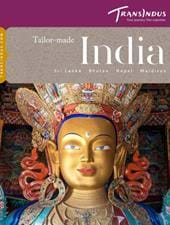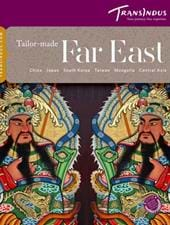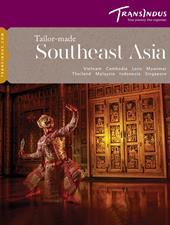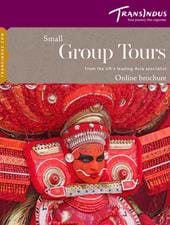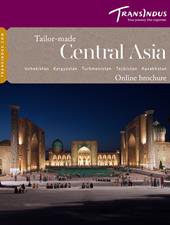Here is some information you might find helpful when planning your visit to Japan to help you get the best out of the destination and ensure your holiday meets expectations.
Time Zone: UTC +9 hours
Flying Time: 11 hours 30 mins
Capital: Tokyo
Currency
The currency in Japan is the Yen. Coins are minted in denominations of 1, 5, 10, 50, 100 and 500 yen. Bank notes are printed in 1000, 2000 (very rarely seen inside of Japan) 5000 and 10000 denominations. Japanese people think nothing of using a 10000-yen note to pay for a 200 yen bill, so don’t be afraid to do the same.
Money and travellers cheques can be exchanged at the airport, most major banks and post offices, and some major hotels. Banks are open 9-3pm, excluding weekends and national holidays.
Japan is still largely a cash society and one should get into the habit of carrying significantly more cash than you would do in the UK. Crime levels in Japan are relatively low, and whilst one should not be careless, carrying large amounts of money is generally a lot safer than it would be at home. Credit cards are accepted at most major hotels, department stores and high-end city restaurants, but should not be relied upon.
Similarly, do not depend on ATMs to withdraw your yen. Some banks in major tourist areas do have ATMs that accept foreign cards, but the majority do not. It is safer to look out for a post office as these do have cash machines which will accept internationally issued Visa, Delta and Cirrus cards. Also, the ATMs in 7-Eleven stores accept a variety of foreign cards including Visa, Mastercard and American Express. Please be aware that many cash machines generally do not operate 24 hours a day. They often close at 21:00 hours or earlier and may not operate at the weekends or on public holidays. In rural areas they may also be hard to find.
Healthcare
Visiting Japan poses no particular health risks and no immunisations are needed. Tap water is drinkable throughout the islands, though drinking from mountain streams should be done carefully and avoided in certain areas of Hokkaido. Japanese summers can be very hot and humid so you should take the normal precautions of limiting the time spent in the midday sun and drinking plenty of fluids.
The cuisine in Japan is usually fresh, mesmerising and a delight to both the eyes and the palate. Eating raw fish or meat (raw horse is a delicacy in certain areas) generally poses no health problems. Western alternatives as well as other Asian cuisines, especially Chinese and Korean, are available at most restaurants, hotels and in cities. We do recommend that you eat moderately for the first few days. This allows your system to get used to the changes.
We also recommend you carry with you a small supply of basic health care medication such as travel sickness tablets, anti-diarrhoea tablets, insect repellent, sun creams and a general purpose antibiotic. Although most of these items are available in Japan, the security provided by brands one is used to is reassuring. Also, antiperspirant can be hard to find outside of the major cities and towns. We strongly recommend that all travellers be properly insured for the holiday. If you have taken your own travel insurance, please check that it includes repatriation costs. Medical bills in Japan are expensive.
Helpful hints when eating out
If you wish to eat out from the hotel you will often have a great deal of choice of what to eat and where. In large cities it is often useful to look up, as many restaurants are above street level. Venturing into a Japanese restaurant (if you don’t speak any Japanese) can be a little daunting. However, with a smile and a slightly adventurous spirit you will usually be fine. Some restaurants have plastic models of the dishes they serve. If you can’t make yourself understood then you can simply show the waiter what you would like by pointing!
When you enter a restaurant you should indicate how many people are in your group on your fingers. This is not rude but what the Japanese do themselves. When you want the bill you can make a cross sign with your fingers, which again is what many Japanese people do. Department stores nearly always have a number of restaurants either on their top floor or in their basement. If you have no idea what you would like to eat you can always say ‘osusume onegaishimasu’, which means ‘your recommendation please’.
In summer some department stores (especially in Kyoto) have rooftop restaurants that offer an, ‘eat all you can, drink all you can’ offer.
Vegetarians in Japan
Vegetarianism is not very common in Japan. What is also important to understand is, to many Japanese, a vegetarian is someone who will not eat meat, but will eat fish (and occasionally even chicken!). You have to make it clear if you cannot eat fish and stress that you don’t eat any meat. You also have to be careful with certain broths, sauces and garnishes as they can contain meat/fish products. For example it is common to serve tofu garnished with fish flakes. There are plenty of things for vegetarians to eat (including vegetarian tempura and sushi); you just have to make it clear you don’t eat meat. Below are some useful phrases:
Niku wo tabemasen = I don't eat meat
Sakana wo tabemasen = I don't eat fish
Watashi wa bejitarian desu = I'm a vegetarian
Bejitarian no ryori ga arimasu ka = Do you have any vegetarian dishes?
Kono ryori ni niku ga haitte imasu ka = Does this dish contain meat?
Kono dashi wa niku ga haitte imasu ka= Does this sauce contain meat?
Clothing
What to wear depends on when and where you are travelling, as Japan’s weather varies tremendously with the seasons. Light sweaters and jackets are usually fine for much of spring and autumn. However it would be advisable to include some warm clothing if travelling from mid October onwards and also in much of March. Light, breathable clothing is best for the summer as temperatures can be high (30+degress), as can the humidity. A hat is also a useful item to take. Winter jumpers, jackets, hats and gloves and shoes capable of keeping dry in the potential snow should be packed from mid to late November through to early March.
If visiting areas in the mountains such as Takayama, temperatures here will generally be some degrees lower than elsewhere, especially at night.
At some of the monuments, temples and shrines, it is advisable to avoid sleeveless tops and short skirts.
Comfortable shoes are recommended, especially for any tour that involves some walking.
In some restaurants and temples (and if you visit a Japanese home) you will be required to remove your shoes. This also sometimes applies to bathrooms in various places. Shoes that are easily removed and clean socks without holes are therefore generally a good idea!
The rainy season stretches from early-mid June to early July, with periods of quite heavy but intermittent rain. It does not rain every day! You may also experience showers at other times of the year. An umbrella or light waterproofs are sufficient protection from these showers. The typhoon season from July through late September can bring extremely heavy rain and strong winds lasting a few days. This is normally followed by clear weather.
**Note on packing**
When preparing for Japan the golden rule to follow is to try to pack light. The majority of public transport, including the bullet trains, does not have a lot of room for large, bulky baggage. Train stations sometimes have few lifts and many stairs. If arrangements have been made to forward your baggage then ensure it is at the front desk of your hotel by the required time on the day of sending.
Hotel Rooms
It should be noted that Japanese hotel rooms are sometimes slightly smaller than the norm of those found in the West. Often guest rooms have twin beds rather than double beds, although we will do out very best to accommodate your requests.
Yukata Etiquette
When staying in Onsen (hot spring) style hotels and often in Japanese inns (Ryokan) you will be provided with a thin, kimono style gown called a yukata. The normal tradition is that people wear these to dinner in this type of accommodation, typically after having a dip in the hot springs. This is not compulsory by any means, but is what most Japanese will do. However, for breakfast it is more normal to be wearing normal clothes.
Laundry
Most hotels offer same day laundry service and some ryokans (Japanese Inns) also have washing facilities. In towns and cities coin operated washing facilities are commonplace. A portable iron can be handy when pressed for time. In remote areas laundry service may not be available.
Shopping
Japan provides great opportunities for the shopper—especially for pearls, electronics, cameras, computers, silk goods, woodblock prints, pottery, paper, and a wide variety of other Japanese arts and crafts.
When purchasing an expensive item, always check the level of duty payable in the UK on your import. Please remember VAT is payable on all goods above the value of £145 per person, even if an item is exempt from other import duties.
Please note that we, or any of our associate offices and agents in Japan, are not responsible for any shopping and related problems, although we assure you of any help that we can provide.
Voltage
The electric voltage in Japan is 100V AC with a 50hz cycle in Tokyo and eastern Japan and a 60hz cycle in western Japan. Japanese plug sockets are of the flat two-pin type (akin to those used in North America). An adaptor obtainable at airports or electrical stores in Japan will be needed to run UK devices.
Post, Phone Calls and Internet
Post Offices are easily found by their distinctive signs; a red ‘〒’ symbol on a white background. As a rule they are open from 9am to 5pm, though many also have a manned after hours window. Postcards to the UK cost about 70yen and a normal letter will be about 110 yen. Japanese post boxes are red. When writing the address, please try to write as clearly as possible.
International phone calls can be made from all hotels, but as always phoning from here can prove costly.
There are a number of public phone booths from which international calls can be made. Those from which international calls can be made will be grey or orange in colour.
Many hotels have Internet access, designating a special ‘cyber café esque’ area for this purpose. In the larger cities Internet Cafes can be frequently found and are known as ‘Manga Cafes’ or ‘Manga Kissa’.
Mobile Phones
International mobile phones with 3G capability work in Japan, all others will not.
Mobile phones can also be rented at Haneda, Narit and Kansai airports. Rental fees are about Yen1,000/day with call charges around Yen 200/min. Prior reservation is also possible over the internet.
For more details please check: http://www.jalabc.com/rental/domestic_eng/index4.html
Emergency Numbers
110 - Police
119 - Fire or Ambulance
If calling from a public phone press the red button before dialling the number.
Earthquakes
Japan is in a major earthquake zone, and earthquakes of varying sizes occur very frequently, though many of these you will not feel. Though the risk is minimal, for peace of mind you should familiarise yourself with safety procedures in the event of an earthquake, and take note of earthquake-related instructions, e.g. in hotel rooms. If a strong earthquake occurs seek shelter under a sturdy table or under a door-frame. Do not immediately flee outside as you put yourself at risk of falling debris. To enable the Embassy or Consulate-General to help British visitors and respond to enquiries from relatives after an earthquake, you can register online with the British Embassy in Tokyo.
Transfers & Tours using Public Trains & Transport
Most sightseeing tours and transfers are conducted using public transport and trains not least because private, chauffeur driven vehicles are disproportionately expensive but also because of the sheer volume of traffic on the city roads impedes journeys. Travel by public transport, in particular by train is fast, efficient and precise.
If you have a JR Rail Pass no ticket is needed to sit in the unreserved carriage but you must show your pass to an attendant in order to pass through barriers. If you have a ‘Kansai Thru Pass’ you can put this into some of the ticket barrier machines like a normal ticket. If it is rejected then show it to an attendant who will let you though the barriers.
If you have an unreserved ticket you must put this into the barrier (if you have two then place one on top of the other and put them into the barrier) then board an unreserved carriage, which will be marked on the platform. If you have a train ticket then ensure you keep it for the length of you journey-you will need it to get out of the station!
With a JR Pass you can obtain a reserve ticket by venturing to a ‘Green window ticket office’ (midori no mado) showing your pass and asking for your desired ticket. In major stations these are marked in English, and there is usually somebody there who speaks enough English to reserve your tickets. Reserved tickets display the carriage number and the seat number, usually in this form: 1号車34番This would mean car one, seat 34. On the platform there are markers that state where your car will stop and you should stand in this area.
**If you are carrying a JR Rail Pass and have a private tour with a guide in a major city such as Tokyo or Kyoto, one option is to go with them to the train station to book reserved train tickets in advance **
For all rail travel (though not that of an inner city nature) it is recommended that you arrive at the station at least 20-30 min before your train is set to depart. This gives you time to orientate yourself, reserve your seat if need be, buy some snacks and find the correct platform.
If you have days at leisure in the major cities you may want to use the local trains or underground systems if present. Though this may seem daunting, getting around is no harder than using the London Underground. All stations display a map showing the train lines in use. Some stations have this is English also. The station you are currently stood at will be marked, often by a red dot. The other stations will usually have a number written alongside their name on the map. This is the fare to that station from where you currently are. Find where you want to go and note the price. All stations will have self-service machines, often of the touch type variety. In places like Tokyo these often have a button to convert everything into English. If not you simply put in the appropriate amount of money (or more if you need change) into the machine. All the fares up to that amount will be then displayed, and you select your fare by touching the screen. Your ticket will then be produced-don’t forget to take it!
Alternatively, if you get confused you have two alternatives. One is to ask a passer by or station attendant for help. A slightly bemused look and stating the desired location name is enough to be understood. The second is to buy the cheapest ticket available. When you get to your destination you then go to the Fare Adjustment Machine, or Fare Adjustment Office before exiting the barriers. You put in your ticket and it will tell you what excess you need to pay. You do this and will be given a new ticket that will allow you to pass through the barriers.
Generally speaking the JR Yamanote Line (green on the map) is the most useful for getting around Tokyo, along with the underground system.
Unless an assistant has been requested, or the transfer is included then transfers from train stations to hotels are generally done on your own. If the chosen hotel is nearby then this transfer will be done on foot. Details of how to proceed are included in your final package of documents given to you before you travel. Also the hotels are well known and further directions can be obtained from the station information desk. If there is a language barrier then you can show the address of the hotel in Japanese and they will be able to help you. If the hotel is not within walking distance, and you have not requested a private transfer then the easiest way to get to your hotel will be by taxi. These are found outside all major train stations. You approach the taxi from the rear side door and it will open automatically. Tell the driver where you need to go and he will invariably put on his white gloves and take you there! Drivers know the names of all major hotels but if there is a language issue just show them the name and address in Japanese. The price in Yen will be displayed on a small screen in the front of the taxi.
**If using a JR Rail Pass**
When redeeming your voucher for your pass, be sure to ask for a JR (Japan Rail) Timetable, written in English. If possible train times have been included in your itinerary it is advisable to check these against the timetable in case last minute changes have been issued by Japan Rail. You must remember to redeem your voucher for your pass at a designated office!
**Note on communicating in English**
Most Japanese will have studied English for a number of years. However, their listening and speaking ability may be behind their ability to read and write. A pen and paper are useful to carry in order to write down any sudden questions you may need to ask.
Public Buses in Japan
While most cities have excellent public bus services, these can be somewhat confusing for visitors at the onset. It is advisable to take sometime to familiarise yourself with the process before boarding a bus or seek help from our local representative using the numbers provided in your final package.
Destination information is more often than not be written in Japanese characters at the front of the bus, not in alphabet. It is advisable to seek local help to ensure you board the correct bus.
Most bus services require you to board at the front front and take a small ticket from dispenser as you enter. This is generally used to establish the fare as you disembark. Other buses require you to board using an entry door in the middle of the bus and disembark at the front. We recommend you follow observe fellow passengers and do likewise.
When disembarking, you will need to refer to an electric board at the front of the bus that displays a seemingly perplexing range of numbers. These will correspond to the numbers on your ticket and establish the fare to be paid.
Car Hire
Hiring a car in Japan is possible but you will need an International Driving licence to do so.
Meeting ponits for SIC (Seat in Coach) tours & transfers
Most sightseeing visits and transfers in Japan utilize 'Seat in Coach' (SIC) in Japan. If your itinerary mentions a SIC tour or transfer, the document/itinerary provided by us will advise you of the time and location of the pick-up.
When you arrive in Japan our agents will give you a fresh pack of information that reconfirms your pick up times and places. You are strongly advised to read this carefully and refer to the times given by the agents. Between the time of preparing the itinerary and the holiday begin operated there may be some minor change in departure timings. We advise you reconfirm the latest timing in the information provided by our agents on arrival. If you are unsure of any details, please contact the agents directly. Contact numbers will be provided for you.
You should aim to get to the meeting place at least 10 minutes before you are due to be picked up. If the pick-up point is not your hotel, please ensure you are able to reach the meeting point at least 10 minutes before departure. The reception desks at your hotels will be able to help you get to the meeting point if you are unsure of how to get there. The meeting point in hotels is usually the reception or bell desk, but you can confirm this with the hotel staff who will be more than happy to help.
A useful tip for the SIC tours is, if they are busy, try to get to your vehicle early in order to have a prime seat at the front.
Unless specifically requested, an assistant is usually not provided for your final transfer to the airport before your return to the UK. Our agents will inform you of where and when to wait for this bus or taxi, and it will be stated on the ticket. However, it is also suggested that you also confirm this with the staff at your hotel.
Points to note
The Japanese are a tolerant people, especially where visiting foreigners are concerned. However, there are a few key points to note in order not to cause offence:
When eating never stick your chopsticks upright into the food, as this resembles rituals for the Buddhist burial ceremony.
Always take your shoes off where required and always before stepping on tatami mat flooring.
You must wash before entering a public bath, and ensure you are free from all suds before entering the public waters. The bath is for relaxing, not cleaning!
When drinking with Japanese people it is customary to refill the cups of those around you, and they, in turn, will refill yours. Drinks are never allowed to remain empty and it is generally bad form to pour your own.
Taxi doors are automated. Don’t try and open or close them yourself!
Blowing your nose in public is also frowned upon!
Suggested Reading List
The Lonely Planet Guide to Japan (Lonely Planet Publications): As ever Lonely Planet provide excellent guides to all the places you could wish to visit in Japan, as well as a wealth of other useful information.
Japan - Eyewitness Guide (Dorling Kindersley Publications): Less bulky than the LP but a very informative guide of the major areas with beautiful photographs and illustrations.
Japan - A Bilingual Atlas (Kodansha International): This atlas covers Japan, with place names in both Japanese and English. The atlas is divided into five parts--area maps, city maps, sight-seeing maps, transportation maps, and thematic maps.
Japan - Fodor’s (Random House Publications): An extremely comprehensive guide that gives excellent reviews of sites and (especially) accommodation). Also they go to great lengths to explain the history behind each area, which proves extremely interesting.
Lost Japan - Alex Kerr (Lonely Planet Publications): Kerr draws on his lengthy experience of living in Japan to provide you a behind the scenes look into many aspects of the culture.
Dogs and Demons - Alex Kerr (Penguin Publications): A book perhaps best read after your holiday Kerr provides a fascinating and somewhat cutting analysis of how he believes modern Japan is being spoiled from within.
An Artist of a Floating World - Kazuo Ishiguro (Faber and Faber): As Japan rebuilds her cities after the calamity of World War II, the celebrated painter Masuji Ono should be enjoying a tranquil retirement. But as his memories continually return to a life and career deeply touched by the rise of Japanese militarism, a dark shadow begins to grow over his serenity. This book provides an intriguing glimpse into the pre WWII ‘floating’ entertainment worlds whilst also touching on issues that powered Japan to war.
